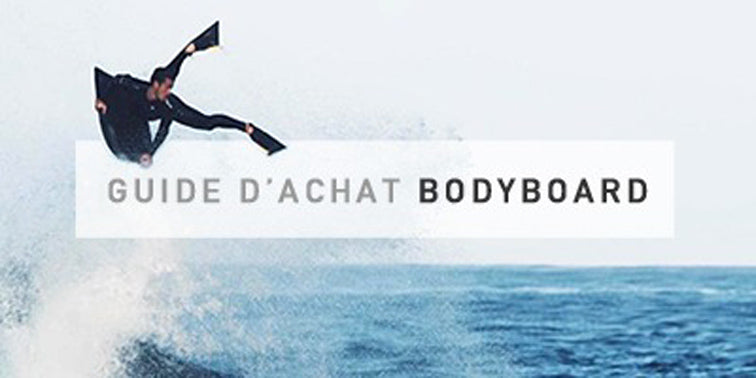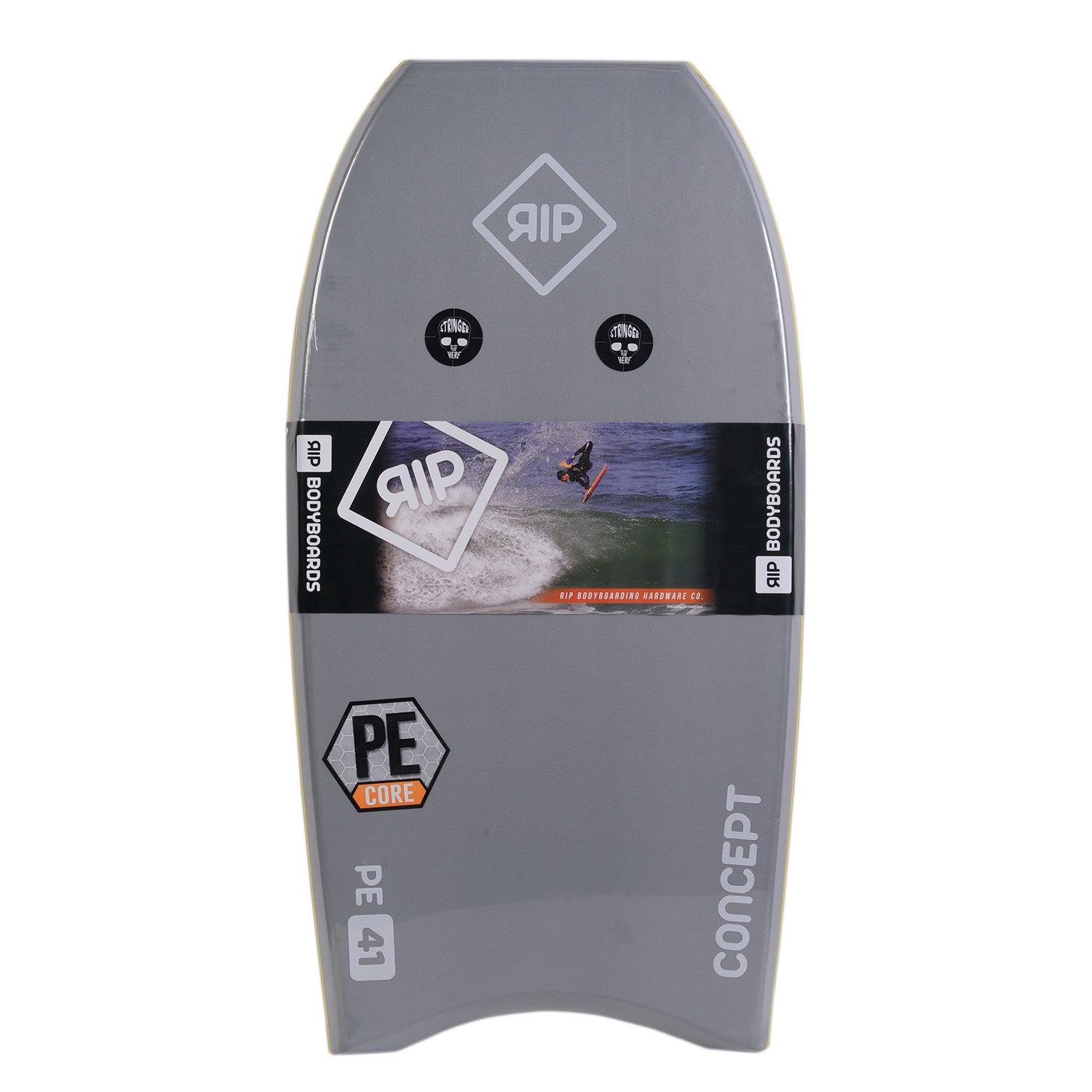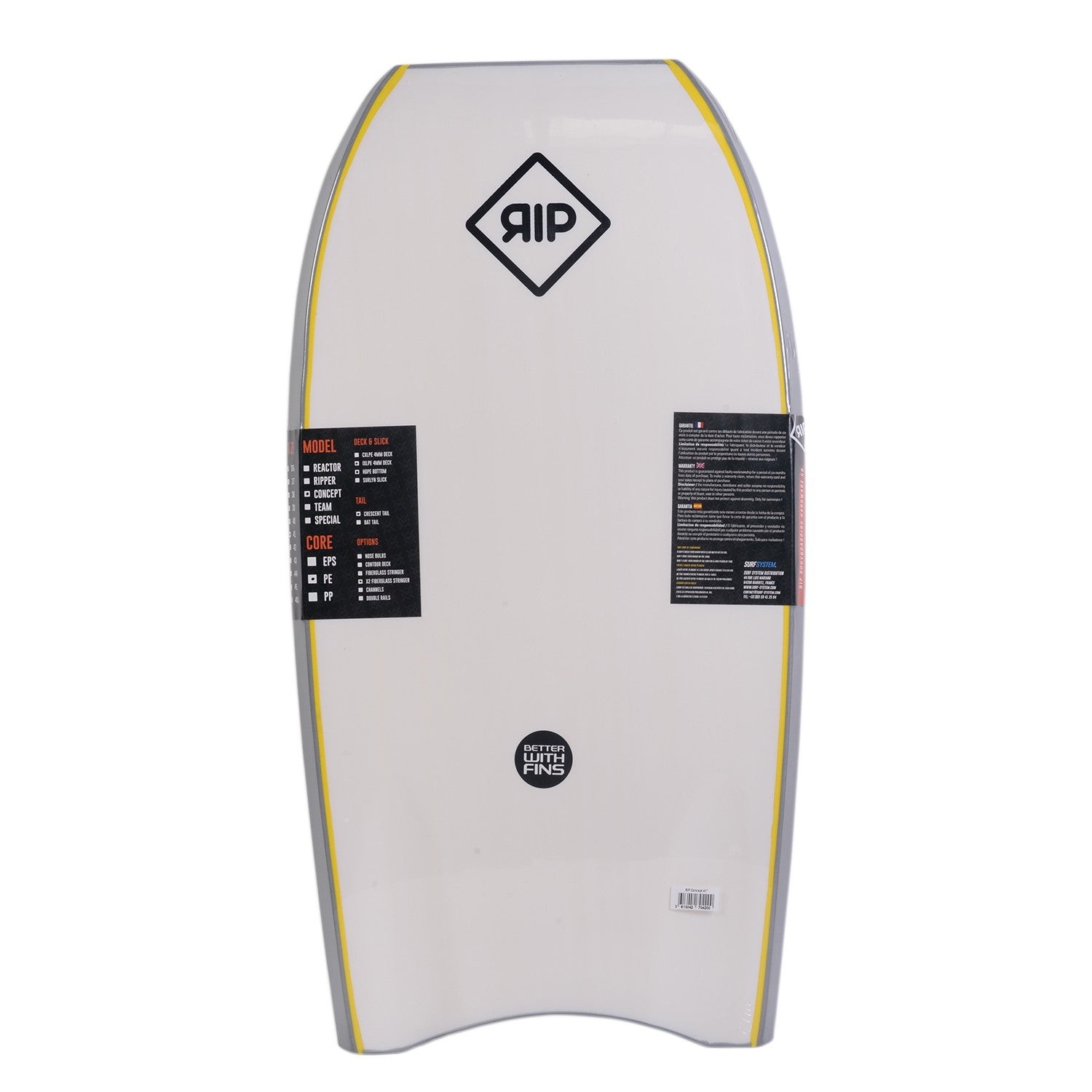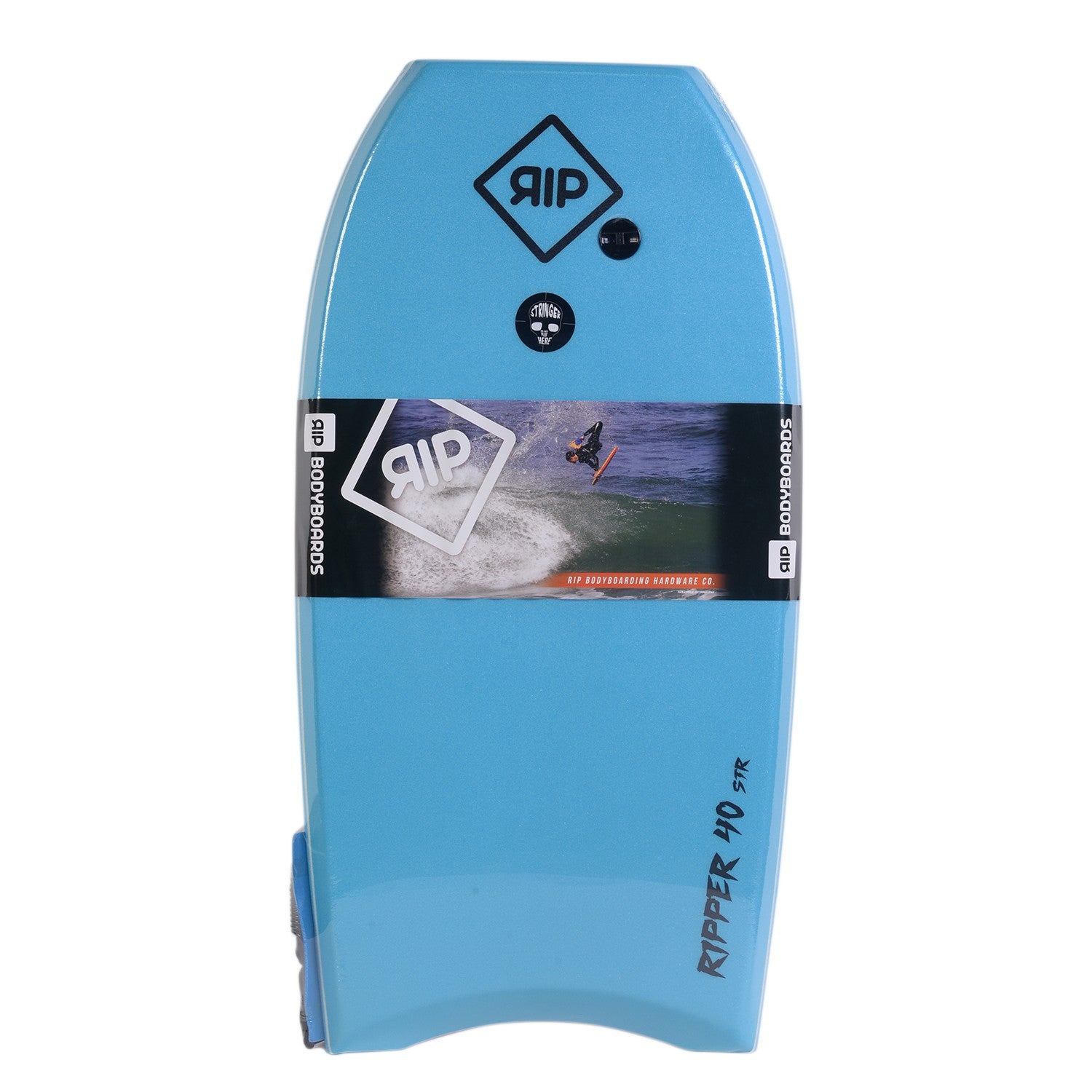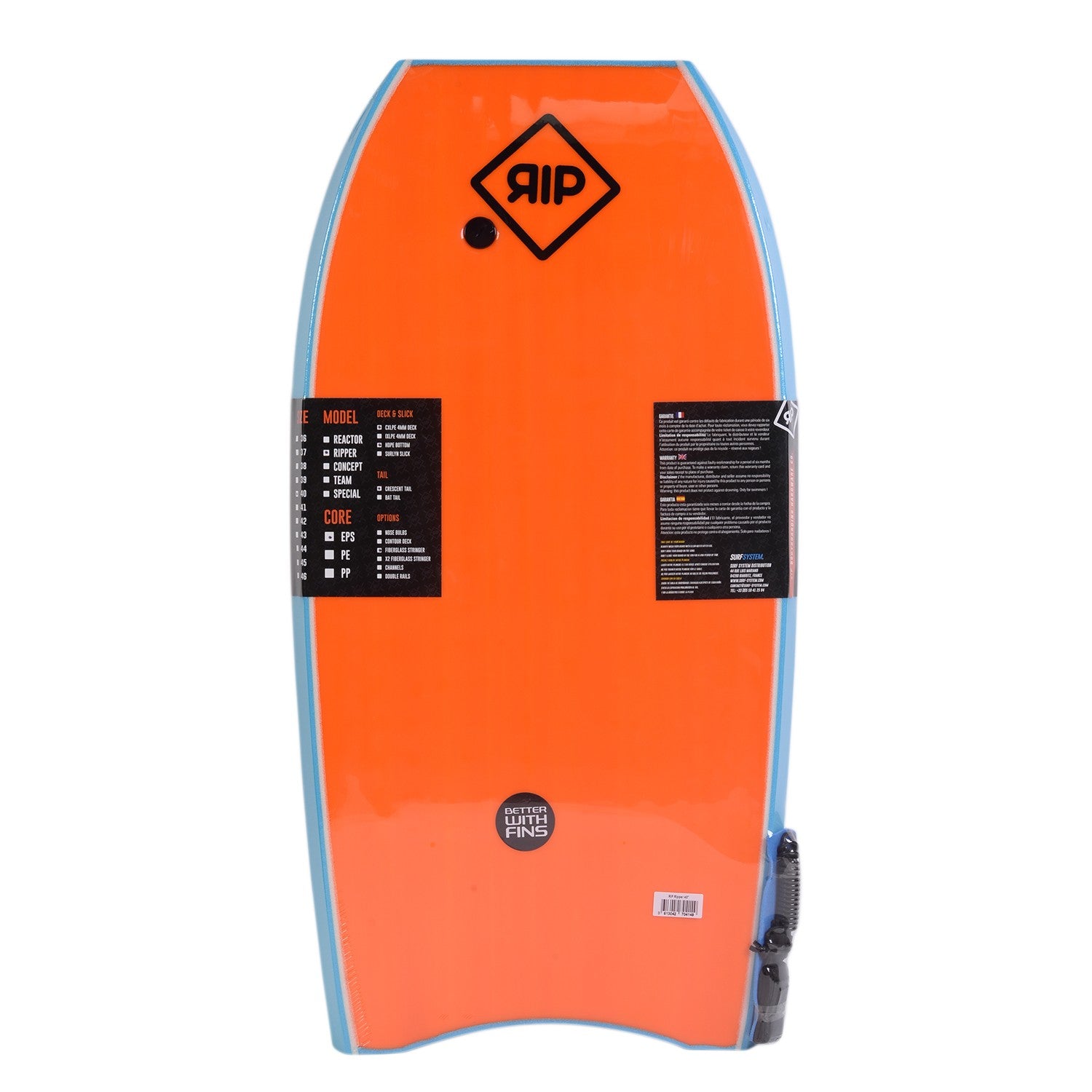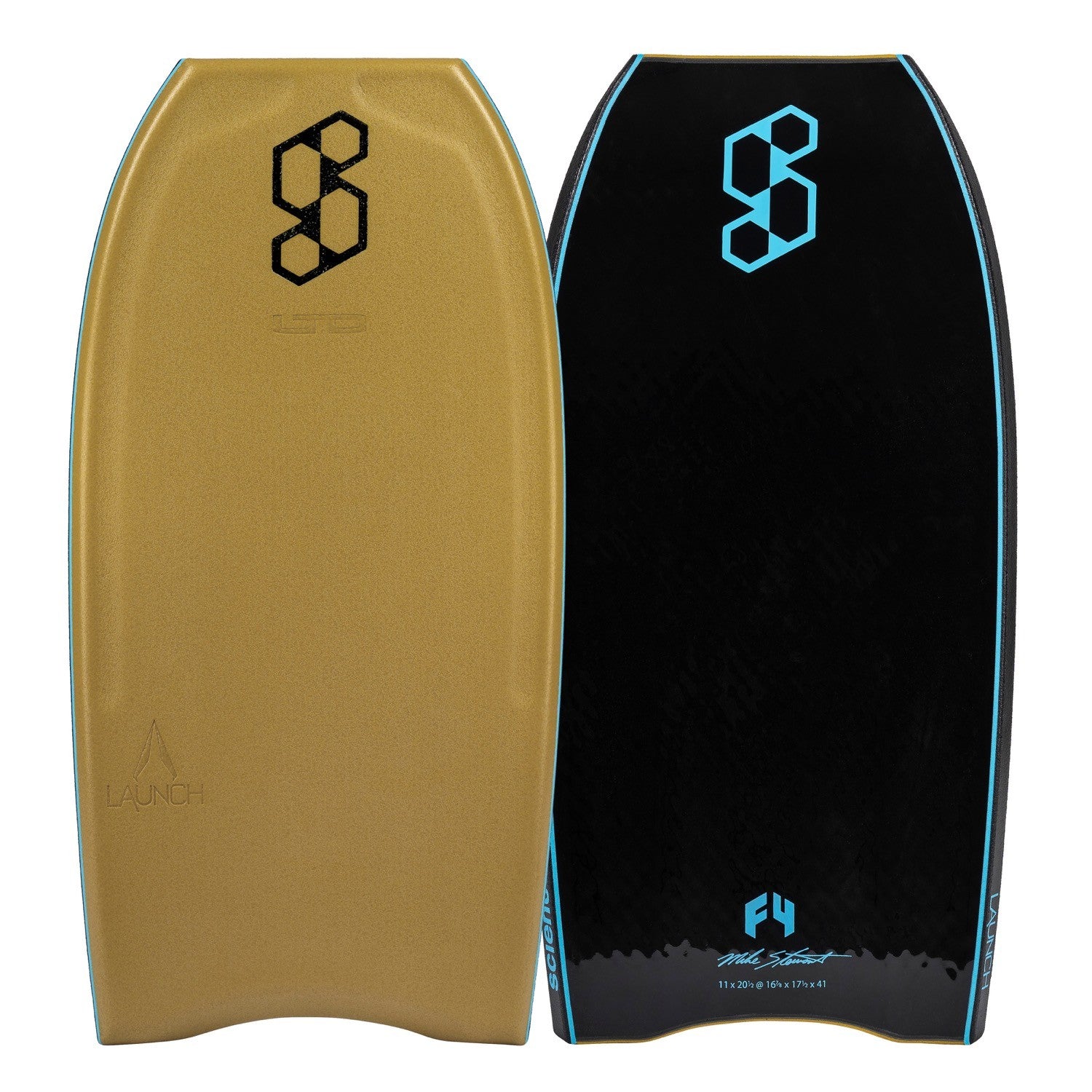Whether you are a beginner, intermediate or experienced, bodyboarding is technical and requires choosing suitable equipment. Below, here are tips for choosing the bodyboard that will suit you best.
The main technical terms defining a bodyboard:
 The size of the board:
The size of the board:
The length of the board and the size of the rider are the first elements to take into account. Here is a summary table allowing you to choose the ideal board size:

Bodyboard Size Choice
The core:
The “core” is the basic element making up the interior of the bodyboard. There are two main types of core: polyethylene (PE) foams and polypropylene (PP) foams.
PE is suitable for cold and temperate waters (which stiffen the boards), it is very flexible and particularly easy to handle . This type of foam is perfectly suited to the water temperatures that you may encounter in France and more generally in Europe (less than 23-24°C).
PP is preferred in warmer waters (which make the boards softer) because it is stiffer and stronger (but also lighter) than PE. It is nevertheless possible to use a PP core in temperate or even cold waters if you are looking for more speed , spring and buoyancy . The performances are, in the latter case, better but the board remains less comfortable than a PE board.
“A PP board will also be much better in terms of durability than a PE board.”
There is also a low density polypropylene (PP), called NRG, often combined with high density polypropylene in hybrid foams. This alloy aims to lighten the board, make it less rigid and faster: it remains the best alternative between PE and PP.
The Tail:
The tail influences the speed, lift and maneuverability of the board. The wider the tail, the more stable the board; conversely, the narrower the tail, the more maneuverable the board.

- The flat tail is present on basic boards, its grip and maneuverability are very low, this is suitable for beginners.
- The crescent tail is a U-shaped tail . This is the most common form, it is suitable for both prone practice (lying on the board) and drop-knee practice (one knee + one foot on the board) . This tail allows maximum contact between the water and the rider as well as natural positioning of the hips when paddling and catching waves. The board is then very maneuverable and rapid changes of direction are facilitated.
- The full crescent tail is a variable of the crescent tail. In this style of tail, the U completely connects the two rails. The grip is better but not the handling.
- The V tail and its V shape , which facilitates positioning, is particularly interesting for drop knee riders.
The bat tail is a bat-shaped tail. It offers more lift, more speed and maneuverability but remains less comfortable than a crescent tail. This type of tail is less easy to control in big waves.
"There are other types of tails such as the wing tail, the square tail..."
The Stringers:
The stringers are tubes of fiberglass or carbon (better quality) inserted inside the core , they bring spring and liveliness to the board.
Thanks to the stringers, the board is more solid and rigid , so deformation is reduced. 
“Stringers not only increase the life of the board, they also improve its performance.”
The number of stringers present in a bodyboard generally varies from 1 to 3 . A layout of a single stringer or three (a central stringer and two smaller ones on the sides) is more suitable for prone riders. Having 3 stringers reinforces the rigidity at the rear of the board while maintaining flexibility at the front, especially where the forearms are placed.
Two stringers provide more stability, essential for the drop-knee.
“A board with stringers will therefore be faster but also more difficult to control.”
The ISS (Interchangeable Stringer System) is a manual interchangeable stringer. Its aim is to modify the rigidity (flex) of a board by adapting the stringer depending on the spot. You can thus adjust the rigidity of the board to influence its speed and reactivity.
“It is perfectly possible to ride without a stringer, especially in cold water.”
The Channels:
The Channels are the parts dug under the board . The aim of the channels is to provide more attention . The deeper the channels, the better the grip, however, they reduce maneuverability and speed. There are different forms of channels , but the most common form remains the graduated channel, which allows you to find a balance between grip and speed.

Rails :
The rails are the sides of the board. The rail is divided into two parts: the submerged part and the emerged part , separated by a stop. They can be of equal size (50/50) or the submerged part can be larger (55/45; 60/40; 70/30).
“The larger the submerged surface, the greater the control and grip (depending on speed)”

The Deck:
The deck is the upper part of the board . There are several types of deck but the most common is the 8lb PE (8 being the unit of measurement for density per inch) . It is quite padded, flexible (polyethylene), pleasant to the touch and has a good grip . We also find IXPE decks, dense and rigid to match PE bodyboards which also require more wax.
More technical decks also sometimes have preformed moldings intended to improve grip, elbow and hand placement and control of the board in general.
The Slick:
The slick is the back of the board , the part is directly in contact with the water. The slick is either made of HDPE (high density polyethylene) or surlyne (mixture of rubber and copolymer, for the most high-end boards) . Thanks to the surlyne and its better elasticity, the board returns to its shape more easily.
The difference between these two materials, however, is only felt from a high level. 
Bodyboard Fins
Essential elements for bodyboarding, fins will give you speed, grip and directional control .
To choose the appropriate fins you must take into account the following criteria: Size, physical condition and technical level.
The shoe size:
Each brand has a precise size code (specified on each WoodstockShop product sheet).
You can nevertheless refer to this average scale of sizes:
S: <40
M: between 40 and 42
ML: between 42 and 43
L: between 43 and 45
XL: <45
Rigidity:
The softer a fin is, the more comfortable it is. On the other hand, it will be less efficient for propulsion. This type of fin is suitable for beginners and occasional users.
Conversely, the more rigid a fin is, the more effective it is for propulsion. However, it will be less comfortable and will be suitable for regular exercisers in good physical shape.
Wearing neoprene socks helps make fins more comfortable.
The shape
- Symmetrical: the two fins are identical, there is neither left nor right. The symmetrical fins have the problem of colliding during strong accelerations. Direction control is simpler with the symmetrical shape.

Some people with knee problems (not general) prefer symmetrical fins which facilitate uniform movement
- Asymmetrical : their shape prevents them from colliding during acceleration. The asymmetrical design allows you to adjust your balance even more precisely. 
At WoodstockShop, we are here to answer all your questions, so don't hesitate to contact us
Have a good ride!

